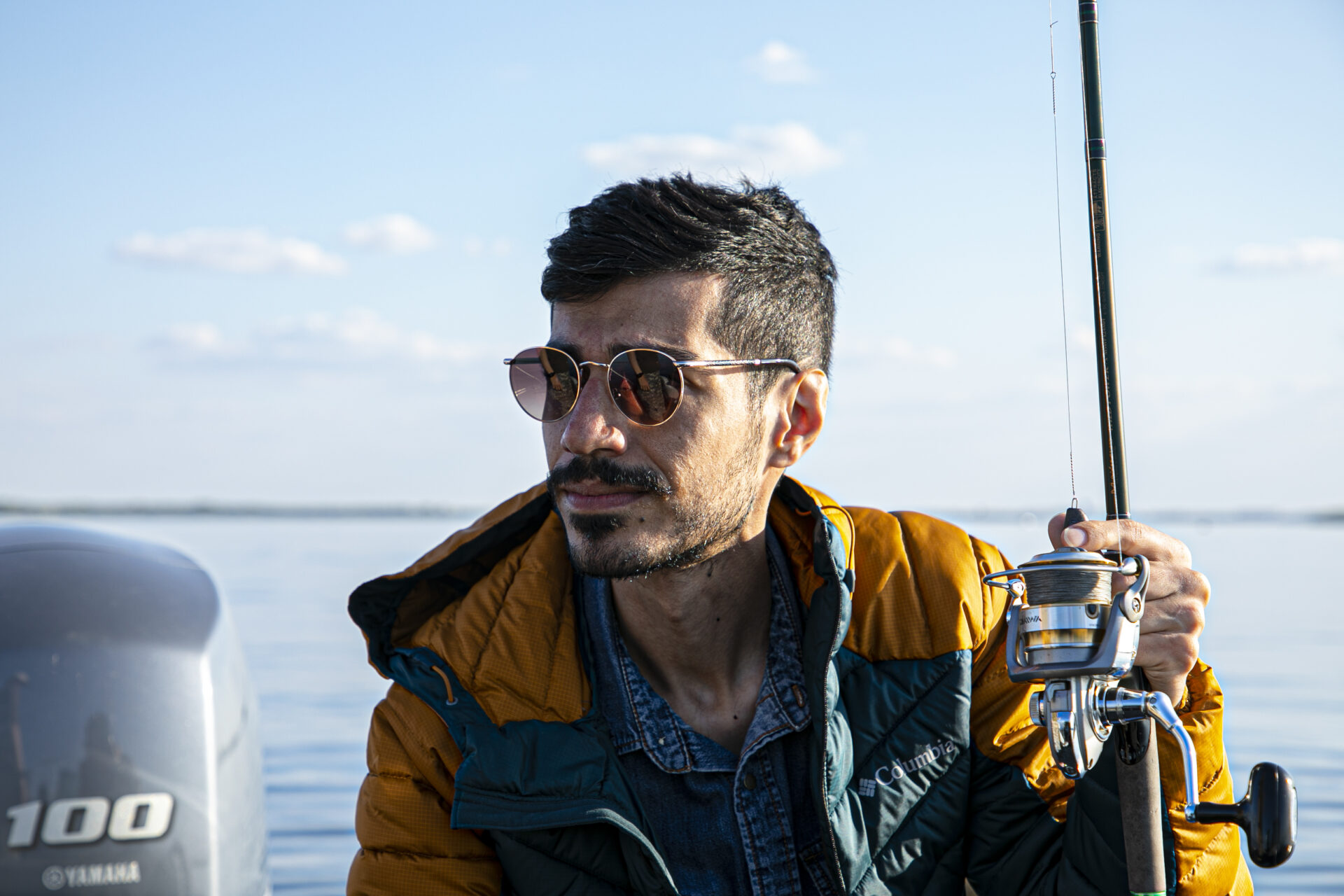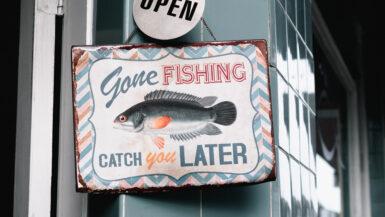Fishing for catfish in rivers and streams is a sport that requires patience and technique. It’s one of the oldest types of recreational fishing and is a great way to spend a summer day out in nature. Catfish are typically found in the slower-moving waters of rivers and streams, and there are several methods you can use to successfully land one. In this article, we’ll discuss the best tips for fishing for catfish in rivers and streams, from the type of gear you’ll need to the baits and lures you should use. With these tips in hand, you’ll be ready to cast your line and catch some catfish!
Identifying Catfish Locations
When it comes to fishing for catfish, the first step is to identify the rivers and streams that are home to catfish populations. Catfish inhabit a variety of freshwater habitats, including rivers, streams, lakes and ponds. To ensure the best chances of finding a catfish, it is important to choose a location that has a good population of catfish.
Checking Local Regulations
Before heading out to a river or stream to fish for catfish, it is important to check any local regulations or laws that may be in place. In some areas, fishing is limited or prohibited in certain areas, so it is important to know the regulations before heading out and risking a fine.
Researching Catfish Hotspots
In addition to checking local regulations, anglers should also do research to find out what rivers and streams are known for catfish populations. Fishing reports and local sources can provide valuable information on where to find catfish in a given area. In addition, it is important to consider the size of catfish in the river or stream and choose an area that is known for larger catfish.
Analyzing River and Stream Conditions
Once the research is done and a river or stream is chosen, it is important to analyze the conditions of the water. Catfish prefer specific conditions, such as slow-flowing water and areas with vegetation or debris. It is important to look for these conditions to increase the chances of finding a catfish in the river or stream.
Choosing the Right Spot
After doing the research and analyzing the conditions of the water, the next step is to choose the best spot to cast the line. Catfish like to lurk around areas that provide food or cover, such as submerged logs, rocks, weeds or vegetation. It is important to look for areas that provide these features, as this will increase the chances of finding a catfish.
Fishing for catfish can be an enjoyable and rewarding experience for anglers of all skill levels. By researching local regulations, locating areas with catfish populations, analyzing river and stream conditions, and choosing the right spot to cast the line, anglers can have a successful day of catfish fishing in rivers and streams.
Preparing Your Equipment
Fishing for catfish in rivers and streams can be an enjoyable and rewarding experience. To make sure you have a successful outing on the water, it’s important to come prepared with the right gear.
Fishing Rod and Reel
When it comes to selecting a good fishing rod and reel, the goal is to select one that fits your needs and skill level. For amateur anglers, a medium action rod with a reel that features a reliable drag system is often a good choice. If you’re fishing in a location with plenty of cover and vegetation, a rod with a heavier action might be a better option.
Tackle
For fishing for catfish in rivers and streams, having the right tackle is essential. Some of the most popular options for catfish in these conditions include Carolina rigs, jigging rigs, and bottom-bouncing rigs. These can be further equipped with sinkers, hooks, and plastic lures to attract the fish.
Bait
When it comes to bait, live and cut bait are the most popular options for catching catfish in rivers and streams. Popular live and cut bait options include shad, minnows, worms, shrimp, and crawfish. Be sure to check local bait shops for the best bait in the area, as well as local regulations for bait.
Tools and Supplies
In addition to your tackle, you’ll also need a few tools and supplies. A net, pliers, a stringer, and a cooler are must-haves for catfishing in rivers and streams. You’ll also want to bring some extra line, weights, and lures in case you lose or break any of your equipment during the outing.
With the right gear, anyone can have a successful outing catfishing in rivers and streams. Knowing which gear to bring, and investing in the right equipment, will help you land the perfect catch.
Baiting Your Hook
The best bait to use when fishing for catfish in rivers and streams depends on the type of catfish you are targeting. Channel catfish, which are commonly found in rivers and streams, are attracted to bait such as worms, stink baits, and shrimp. Flathead catfish, which are slightly larger than channel catfish, typically prefer live bait such as minnows, frogs, and crayfish. For bullhead catfish, chicken livers, worms, and stink baits will work well.
Preparing the Hook and Bait
Once you have chosen the bait, it is important to make sure the hook is properly baited in order to catch catfish. To properly prepare a hook with bait, thread the chosen bait onto the hook and make sure it is securely attached. Make sure to leave enough of the bait exposed so that the catfish can see it and be attracted to it.
Setting the Hook
Once the hook is baited, it is important to set the hook properly. When you feel a bite, set the hook firmly by quickly jerking the rod up. This will ensure that the hook has a good hold on the catfish. If the hook is not set properly, you may lose the fish.
Determining the Location
When fishing for catfish in rivers and streams, it is important to determine the location where catfish are most likely to be found. Generally, catfish prefer areas with a current and are typically found near river banks and around structures such as logs, rocks, and bridges. Once you have located a spot with a good current and structure, you can begin baiting your hook.
Setting the Hook and Reeling In the Catfish
Fishing for catfish in rivers and streams requires the right kind of hook. It is essential to select the right hook to get good results. Catfish have large mouths and need a hook that can hold it securely. Consider using circle hooks as they allow the fish to take the bait properly and easily. You can also use offset or J-hooks that have a flattened point which makes it easier to set the hook. It is important to use the right size of hook too. Hooks that are too large can injure the catfish and prevent it from taking the bait. Generally, a size 8 to 10 hook is suitable for fishing for catfish in rivers and streams.
Baiting the Hook for Catfish
When fishing for catfish in rivers and streams, it is important to bait the hook properly. The best bait for catfish is nightcrawlers and chicken livers. Cheese, hotdogs, and shrimp are also good for catfish fishing. The ideal bait for catfish is one that can stay on the hook for a longer period of time. Anise extract is also an effective bait as it has a strong smell that catfish can detect. To increase the effectiveness of the bait, you can dip it in anise oil. Another good bait is dough balls which are made of flour, cornmeal, and water. Once the bait is ready, it should be attached firmly to the hook without covering the barb.
Setting the Hook
When fishing for catfish in rivers and streams, set the hook after the fish takes the bait. When you feel the fish taking the bait, pull the line and set the hook. Be sure to set the hook firmly as this will prevent the catfish from getting away. Do not set the hook too soon as it might result in the bait slipping away. Setting the hook correctly will help you land the catfish quickly and efficiently.
Reeling In the Catfish
Once you have set the hook, start reeling in the catfish slowly. Don’t try to yank the line as this will scare the catfish and make it swim away. Instead, use steady and gentle pressure to slowly bring the catfish in. Be sure to give the fish enough room to swim, as it will tire out faster and be easier for you to land. If the fish starts swimming upstream, simply let it go and reel in the line slowly to regain control. Once the fish is close to you, you can use a net to land it and unhook it.
Landing the Catfish
Fishing for Catfish in rivers and streams require the right gear, and it’s important to make sure you have the correct equipment with you before you attempt to land one of these voracious fish. Of course, you’ll need a rod and reel to start. Catfish are bottom-feeders so it’s important to opt for a heavy-duty rod and reel combo, as Catfish can get quite large. You’ll also want to go with a baitcasting reel, as these are easier to manage when dealing with larger fish. For bait, live worms, crayfish, and other live bait are preferred, as well as cut bait such as shad, perch, and other fish. Make sure you have enough for a lengthy trip.
Understanding the Basics
Before you try to land a Catfish, you’ll need to understand the basics of fishing for them. First, you’ll want to know where to look for the fish. Since Catfish are bottom dwellers, they generally congregate in areas with slow-moving or still water, or near thick vegetation or other structure. Once you’ve pinpointed a potential Catfish spot, locate the fish by gazing into the water and observing the current. Finding a few Catfish is a good sign that you’ve found a good spot to fish.
Setting the Hook
Once you’ve identified a potential Catfish, it’s time to set the hook. Make sure your bait is placed properly and wait for the fish to take the bait. A few minutes of waiting may be required before the Catfish takes the bait. If you feel a tug, pull back gently and make sure the hook is set firmly in the fish’s mouth. If not, give the bait a few more moments before attempting to set the hook again.
Reeling In the Catfish
Once the hook is set, it’s time to start reeling the Catfish in. Start by slowly and steadily pulling the line. If you feel the Catfish drag heavily on the line, allow the fish a moment to struggle and then continue to reel. It’s important not to jerk the rod too much, as this could cause the hook to come loose. Keep the line taut and continue to reel until the Catfish is close enough to net.
Netting The Catfish
Once you’ve reeled the Catfish in close enough, it’s time to net the fish. Catfish tend to put up a good fight, so make sure you net them from the front and push the net down into the water until the fish is completely enveloped. Once the fish has been netted, carefully bring it to the surface and lift it into the boat or onto the shore. Make sure you take extra care when handling the Catfish, and take note of the size before releasing it back into the water.
Handling and Releasing the Catfish
Once you have reeled in your catch, the first step for properly handling and releasing the catfish is to keep it alive and healthy. You should first use a pair of needle nose pliers to gently remove the hook from the catfish’s mouth. Then, use a fish grip or net to hold the fish and keep it in water to keep it from getting stressed and dehydrated. You should also be mindful of where you are handling the fish as to not cause harm to the fish or the environment.
Measuring the Catfish
If you want to keep track of the size of your catches, you may want to measure the fish as it is important to know the dimensions of fish before releasing them. To measure the catfish, place it on a flat surface and measure from the tip of the nose to the tip of the tail. Particularly large catfish should be released as quickly as possible and it is advised to not take it out of the water for extended periods of time.
Reducing Fish Stress
It is important to take measures to help reduce the amount of stress that is on the fish as it is being handled and released. To do this, keep the time out of water to a minimum, handle the fish carefully, and only take a few pictures of the fish before releasing. The sooner the fish is back in the water the better, as the longer it is out the less likely it is to survive.
Releasing the Catfish
When it comes time to release the catfish back into the water, ensure that it is done as gently as possible. You can use a net to lower the fish back into the river or stream to minimize the amount of stress and make it easier to release. When releasing the fish you should be sure to place it back in the same water it was caught in to reduce the chances of it getting disoriented. It is also important to keep the release of the fish as quick as possible to ensure it can get back to safety as soon as possible.
Catch the Prize Catfish
Fishing for catfish in rivers and streams can be a rewarding experience. In order to maximize your chances of a successful catch, determine the water’s current and the type of fish you are targeting. Once you have an idea of the conditions, use appropriate lures and tackle – such as live bait, jigs and spinners – that catfish may find attractive. Experiment with presentation techniques such as float fishing, still fishing and drift fishing to see which works best for the conditions. With a little patience and practice, you’ll soon find yourself with a prize catfish to show off.





Leave a reply